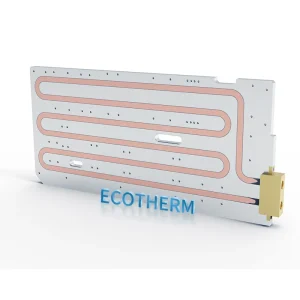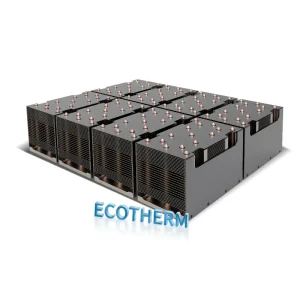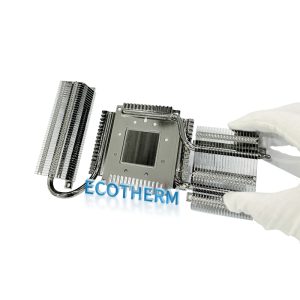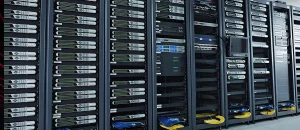Liquid cooling system
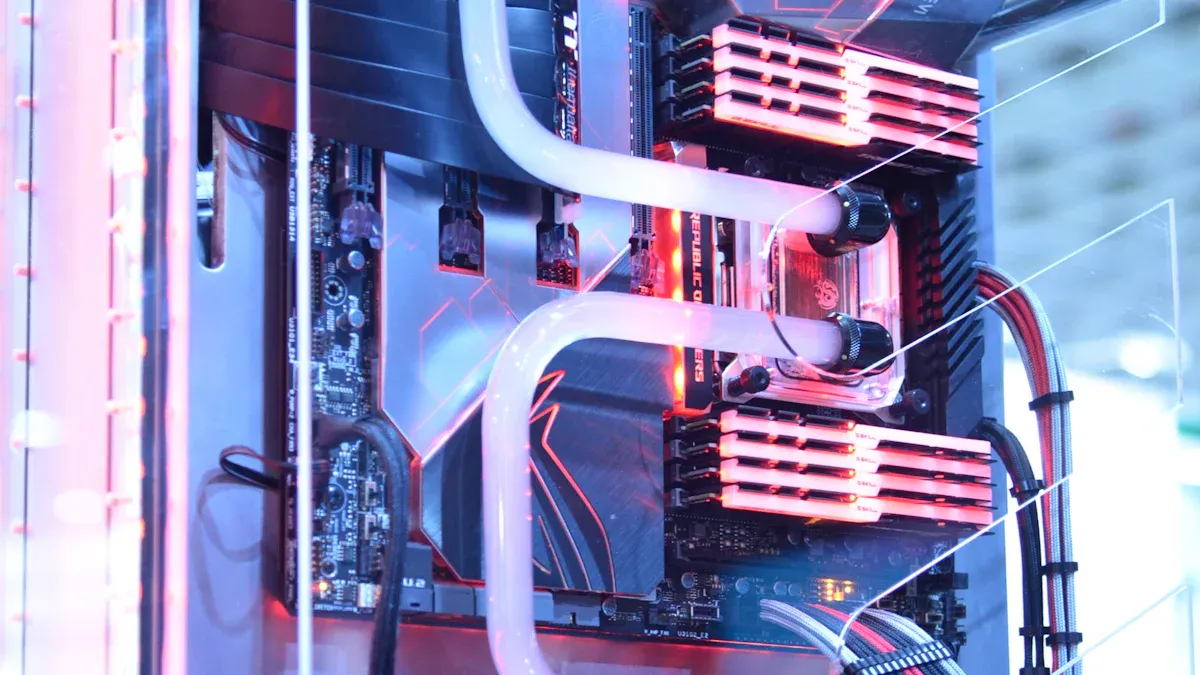
A liquid cooling system uses a fluid to pull heat away from computer parts like CPUs and GPUs. This technology is now replacing air cooling in many fast computers. It moves heat away much faster. It also keeps the temperature steady. In the last ten years, more companies started using these systems. You can see this in the table below:
| Year | Percentage of Facilities Using Liquid Cooling | Change in Adoption Rate |
|---|---|---|
| 2017 | 27% | N/A |
| 2020 | 16% | -11% |
| 2020 | 19% (experimenting) | +13% |
The T-Global Liquid Cooling System is special. It uses strong pumps, radiators, and tough tubes. These parts help your computer stay cool and work better.
Key Takeaways
- Liquid cooling systems use a special liquid to take away heat from computer parts. They work better than air cooling. These systems keep temperatures steady. This helps computers work well during hard tasks like gaming or data work. Liquid cooling can save energy. It can lower electricity bills. This helps your wallet and the environment. You must do regular maintenance. Check coolant levels often. Look for leaks to keep your system working well. Pick the right liquid cooling system for your needs. All-In-One (AIO) is simple. Custom loops give more choices. Hybrid systems offer a balance. Liquid cooling systems can make your setup look cool. You can use colored coolant and RGB lights. This makes your computer look nice. Liquid cooling systems cost more at first. But they can save money over time because they last longer and work better. You need to know how to install them. You should also know about risks like leaks and if parts fit together. This helps you set up and use your system the right way.
What is a liquid cooling system?
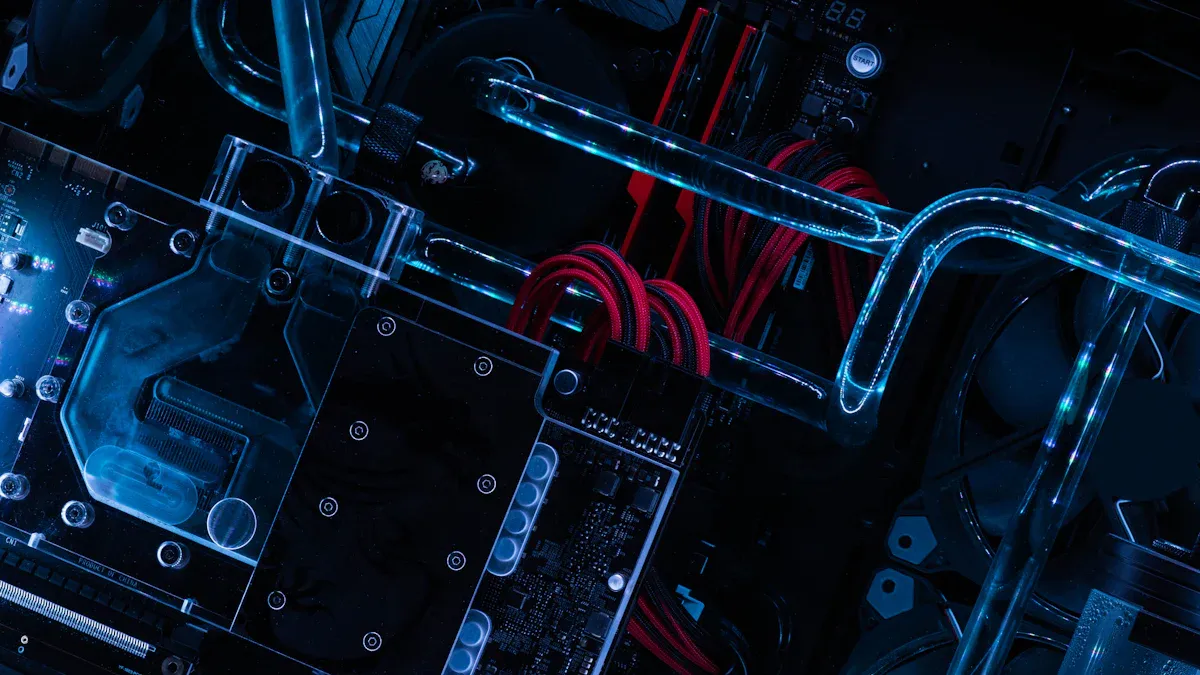
Definition
A liquid cooling system uses a special liquid to take heat away from electronics. You can find this system in computers, gaming setups, and data centers. The water block is the main part. It sits on top of the processor or graphics card. The liquid moves through the water block and takes heat from the chip. You can use air cooling with this system, but liquid cooling works faster and better.
- Direct Liquid Cooling sends coolant right to hot parts like CPUs and GPUs.
- Immersion Cooling covers the whole part in a safe liquid for better heat removal.
- Liquid cooling systems are used in powerful computers, gaming PCs, and AI data centers.
The T-Global Liquid Cooling System has advanced water blocks, pumps, and radiators. This helps move heat better and keeps your computer working well, even when it is busy.
Purpose
A liquid cooling system keeps your computer or device at safe temperatures. It takes in heat and moves it away better than air cooling. The liquid can hold more heat, so it removes more from the system.
- You can put parts closer together, which saves space and makes things work better.
- The system uses less energy for cooling, so you pay less for electricity and help the planet.
- You get lower temperatures and less slowing down, so your computer runs faster and smoother.
Tip: If you want to make your CPU or GPU run faster, a liquid cooling system helps you do this without getting too hot.
Comparison Table: Air Cooling vs. Liquid Cooling
| Criteria | Air Cooling (Advanced) | Liquid Cooling System |
|---|---|---|
| Efficiency | High | High |
| Maintenance | Very Low | Medium to High |
| Installation Complexity | Simple | Complex |
| Noise | Very Low | Low |
| Scalability | High | High |
| Precision Temperature Control | Excellent | Excellent |
| Environmental Compliance | Excellent | Depends on fluid |
| Cost | Lower | Higher |
Liquid cooling systems move heat better. They can lower equipment temperature by up to 20°C compared to air cooling. The T-Global Liquid Cooling System is special because it uses strong tubes and powerful pumps. This makes it great for hard jobs.
How it works
Heat transfer process
You can see how a liquid cooling system moves heat by looking at each step. The process starts when your computer’s processor gets hot. The heat travels from the chip to the water block. Thermal paste fills tiny gaps, making sure heat moves quickly. The coolant inside the water block absorbs this heat. The pump pushes the heated coolant through tubes to the radiator. Air flows over the radiator fins, carrying heat away from the system. The pump keeps the coolant moving, so your computer stays cool.
Here is a table that shows each step in the heat transfer process:
| Step | Mechanism | Description |
|---|---|---|
| 1. Heat Absorption | Conduction | Heat moves from the processor to the water block via thermal paste. |
| 2. Heat Transfer | Convection | The coolant absorbs heat and is pumped through tubes to the radiator. |
| 3. Heat Dissipation | Convection | Air is blown over the radiator fins, dissipating heat into the environment. |
| 4. Continuous Cycle | – | The pump keeps the coolant moving, maintaining a steady temperature. |
Note: T-Global uses high-performance pumps and radiators to make sure heat leaves your system quickly. The special thermal paste helps transfer heat faster than air cooling.
Key principles
You need to understand two main ideas: conduction and convection. These principles help your liquid cooling system work better than air cooling.
- Water has much higher thermal conductivity than air. This means it can carry heat away from your computer parts much faster.
- Conduction happens when heat moves from the processor to the water block. The water block touches the chip directly, so heat leaves the chip quickly.
- Convection takes over when the coolant absorbs heat. The pump moves the heated coolant to the radiator. Air flows over the radiator fins, carrying heat out of the system.
- Both conduction and convection are important in high-density electronics. They keep your computer running smoothly, even when you push it hard.
- The design of the system keeps fluid away from electrical parts. This makes the system safe and reliable.
The coolant follows a clear path through your system:
- The pump draws coolant from the reservoir and pushes it into the water block.
- The coolant absorbs heat from the processor or graphics card.
- The heated coolant moves to the radiator.
- Air flows over the radiator fins, cooling the liquid.
- The cooled liquid returns to the reservoir, ready to repeat the cycle.
T-Global’s liquid cooling system uses strong pumps, advanced radiators, and durable tubes. These parts work together to keep your computer cool and stable. You get better performance and longer life for your electronics.
Components
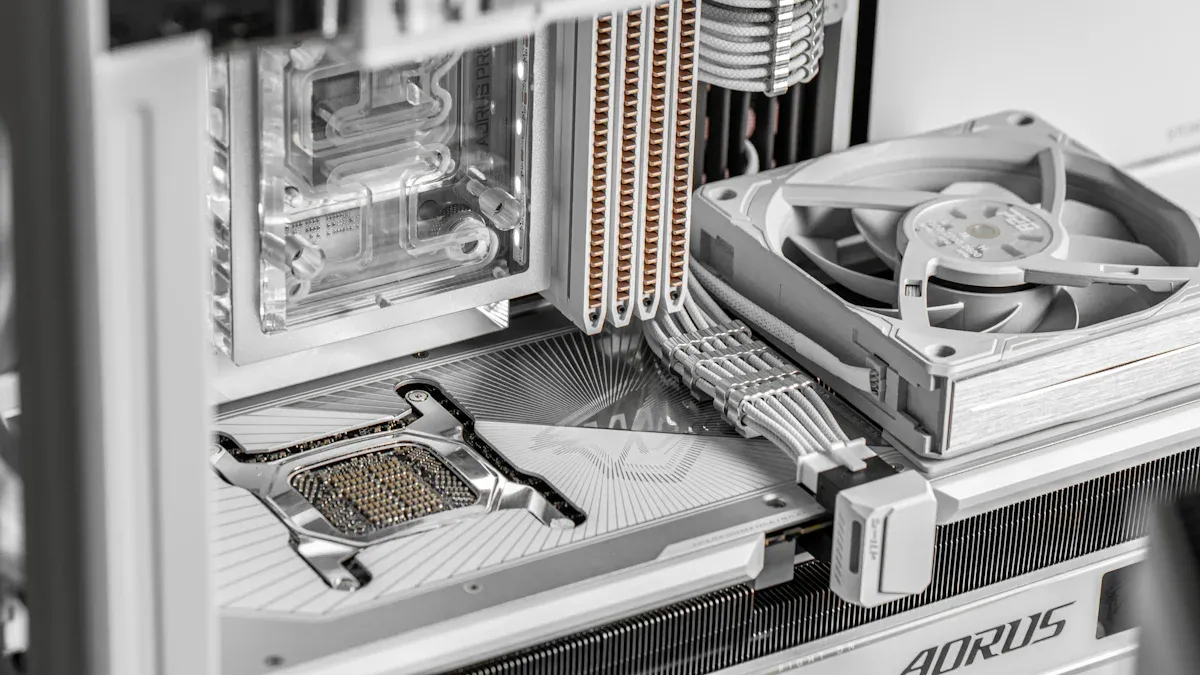
Pump
The pump is a very important part of a liquid cooling system. It moves the coolant around the whole system. When you turn on your computer, the pump starts right away. It pulls cool liquid from the reservoir and sends it to the water block. This keeps heat from building up on your processor or graphics card. If you want your computer to stay cool, you need a good pump. T-Global uses pumps that are strong and work well. These pumps help your computer stay cool, even when you use it a lot.
Heatsink
The heatsink helps the radiator get rid of heat. It looks like a group of thin metal fins. These fins give more space for heat to leave. When hot coolant gets to the radiator, the heatsink helps move heat to the air. Fans blow air over the fins and take heat away from your computer. This keeps your computer parts from getting too hot. T-Global makes heatsinks with good materials. These materials help move heat better and make the system work well.
Coolant
Coolant is the liquid that goes through your cooling system. You can use water or a special liquid made for computers. The coolant takes heat from the water block and brings it to the radiator. Liquids move heat better than air. This helps your computer run cooler and faster. T-Global uses coolants that do not rust and work with all parts. You do not have to worry about the coolant hurting your computer.
Tip: Always look at your coolant level. If it is low, your computer can get hotter and not work as well.
| Component Type | Characteristics | Contribution to Durability and Efficiency |
|---|---|---|
| PVC, Rubber, Silicone | Some are more bendy and hard to kink | Silicone is best for tricky loops because it can handle high heat. |
| Compression Fittings | Seal tightly and leak less | Good seals stop leaks and help the system work better. |
| Quick Disconnects | Make fixing easier | You can fix things fast without hurting the system. |
| Tubing | Strong and safe with chemicals | Stops damage in special coolants, so the system lasts longer. |
All the parts in a liquid cooling system work together. The pump, heatsink, and coolant each help keep your computer cool and working well.
Water block
The water block is the heart of your liquid cooling system. You place it directly on top of your CPU or GPU. Its job is to pull heat away from these parts as fast as possible. When you use a water block, you give your computer a big advantage in cooling.
A water block has a flat metal base, usually made from copper or nickel-plated copper. These metals move heat very well. The base sits tightly against the processor. You apply a thin layer of thermal paste between the chip and the water block. This paste fills tiny gaps and helps heat move from the chip to the block.
Inside the water block, you find a network of small channels or fins. Coolant flows through these channels. As the coolant moves, it picks up heat from the metal base. The design of the channels matters a lot. More channels and a bigger surface area mean better heat transfer. T-Global uses advanced designs to make sure the water block pulls heat away quickly and evenly.
Tip: Always check that your water block sits flat on the processor. If it does not, heat will not move well, and your system may get too hot.
Here are some key features of a high-quality water block:
- Material: Copper or nickel-plated copper for best heat transfer.
- Microfin Structure: Many thin fins or channels inside to increase surface area.
- Sealed Housing: Prevents leaks and keeps coolant flowing where it should.
- Easy Mounting: Simple brackets or screws for a tight fit.
| Feature | Why It Matters |
|---|---|
| Copper Base | Moves heat away from the chip quickly |
| Microfin Channels | Gives coolant more area to absorb heat |
| Leak-Proof Design | Keeps your system safe and dry |
| Smooth Surface | Ensures full contact with the processor |
T-Global water blocks use these features to give you reliable and efficient cooling. The blocks fit many types of CPUs and GPUs. You can use them in gaming PCs, workstations, or even data centers. The strong build and smart design help your system stay cool, even when you push it hard.
If you want to get the most from your liquid cooling system, start with a good water block. It sets the stage for the rest of your cooling loop. With T-Global, you get a water block that works fast, lasts long, and keeps your computer safe.
Types of liquid cooling systems
When you choose a liquid cooling system, you can pick from three main types. Each type has its own features, benefits, and challenges. You should know how they work before you decide which one fits your needs.
| Cooling System Type | Features | Advantages | Disadvantages |
|---|---|---|---|
| AIO (All-In-One) | Limited customization, pre-assembled | Easier installation, compact design, good thermal performance | Less flexibility in component choice |
| Custom Loop | Fully customizable, separate components | High efficiency, can cool multiple components | More complex installation, higher cost |
| Hybrid | Combines liquid and air cooling | Comprehensive cooling, less complexity than custom loops | May not be as efficient as a full custom loop |
Custom loop
A custom loop gives you full control over your cooling setup. You select each part, such as the pump, radiator, water block, and tubing. This type lets you cool more than one part at a time, like your CPU and GPU. You can also choose the size and shape of your loop to fit your case. Custom loops offer the best cooling performance. You can use them in high-performance gaming PCs, workstations, or data centers.
You should know that building a custom loop takes time and skill. You need to plan the layout, cut the tubes, and connect all the fittings. The price can change a lot, depending on the parts you pick. Most custom loops cost more than other types. The installation is also more complex.
| Cooling System Type | Price Range | Installation Complexity |
|---|---|---|
| Custom Loop Liquid Cooling | Varies widely | High |
Tip: If you want the best cooling and do not mind a challenge, a custom loop is a strong choice.
All-in-one (AIO)
An all-in-one (AIO) system comes ready to use. You get a sealed unit with a pump, radiator, and water block already connected. You only need to mount it in your computer and plug it in. AIO systems work well for most users. They give you good cooling without much effort.
AIO systems cost less than custom loops. You can find many models for around 179.99€. The installation is simple. You do not need special tools or skills. You also do not have to worry about leaks or maintenance as much.
| Cooling System Type | Price Range | Installation Complexity |
|---|---|---|
| AIO (All-In-One) | ~179.99€ | Low |
Note: AIO systems are great if you want easy setup and reliable cooling.
Hybrid
A hybrid system mixes liquid and air cooling. You get a water block and pump for your main chip, but fans still cool other parts. This setup gives you better cooling than air alone, but it is not as strong as a full custom loop. You do not have to deal with as many parts or as much planning.
Hybrid systems work well if you want a balance between performance and simplicity. You get some of the benefits of liquid cooling without the full cost or complexity.
Hybrid systems can help you keep your computer cool with less effort.
T-Global’s scalable design
T-Global offers a liquid cooling system that fits many needs. You can use it in a small gaming PC or a large data center. The design lets you scale up or down, depending on your setup. You get strong pumps, durable tubes, and efficient radiators in every system. This means you can trust your cooling, no matter how big your project grows.
Benefits
Performance
You want your computer to be fast and not crash. A liquid cooling system helps you do this. It takes heat away from your CPU and GPU better than air cooling. This means your computer can work hard without getting slow. You get steady speeds, even when you play games or edit videos.
- Liquid cooling systems can make chips much cooler than air cooling.
- Your system stays stable, even if the room is hot.
- Your computer stays cool in many places, so you do not worry about overheating.
Using a liquid cooling system also protects your computer parts. Cooler parts have less stress. This helps your computer last longer and work better.
Tip: If you want your computer to do big jobs without slowing down, liquid cooling is a good idea.
Noise
Fans in air-cooled computers can get very loud. This happens when your computer works hard. Liquid cooling is much quieter. The pump and radiator fans make less noise than regular air coolers.
- Water-cooling systems are usually about 49 dB.
- Air-cooled systems can be as loud as 90 dB.
- This big difference keeps your workspace quiet, even during hard tasks.
A quiet computer helps you focus more. If you use your computer in an office or with others, less noise is better. You can play games, work, or watch videos without loud fan sounds.
Overclocking
Overclocking lets you make your CPU or GPU run faster. This gives you more power for games or work. But overclocking makes more heat. If you do not cool it, your computer can slow down or turn off.
A liquid cooling system gives you the cooling you need for safe overclocking. It keeps your processor at a steady temperature, even when you make it faster. You get better performance without overheating.
| Use Case | Benefit of Liquid Cooling |
|---|---|
| Gaming | Steady frame rates, no slowdowns |
| Industrial | Reliable work, less downtime |
| Data Center | Saves energy, better performance |
T-Global systems help you save energy and protect the planet. They use closed loops to recycle coolant and use less water. This makes them a smart choice for homes and big setups.
Aesthetics
When you build a computer, you want it to look as good as it performs. A liquid cooling system gives your setup a modern and clean appearance. You see smooth tubes, shiny water blocks, and glowing coolant. These features turn your computer into a showpiece, not just a tool.
You can choose from many colors and lighting options. Many liquid cooling systems, like T-Global’s, support RGB lighting. You can match the lights to your room, your team colors, or your favorite game. The lights can pulse, change color, or stay steady. This makes your computer stand out at home, in the office, or at a gaming event.
Tip: If you want your computer to look unique, pick a liquid cooling system with customizable lighting and clear tubing.
Here are some ways a liquid cooling system improves your computer’s look:
- Clear Tubing: Lets you see the coolant flow. You can pick colored coolant for extra style.
- RGB Lighting: Adds color and movement inside your case. You control the effects with software.
- Sleek Water Blocks: Metal and glass finishes give a high-tech feel.
- Neat Layout: Tubes and blocks fit close to the parts. This keeps your case tidy and open.
| Feature | Visual Impact |
|---|---|
| Colored Coolant | Adds bold color to your build |
| RGB Fans and Blocks | Creates dynamic lighting effects |
| Transparent Reservoirs | Lets you watch the coolant in motion |
| Minimalist Design | Gives a clean, professional appearance |
You can use these features to match your style. Some people want a bright, colorful look. Others want a simple, clean design. T-Global’s system works for both. The parts have a polished finish and strong build. You get a system that looks good and lasts long.
In gaming setups, a liquid cooling system can make your PC the center of attention. In offices or data centers, it shows that you use advanced technology. A neat and modern look can impress clients and coworkers.
Many users share photos of their liquid-cooled computers online. You can join this community and show off your build.
A good-looking computer is more fun to use. You feel proud when you see your system glow and run smoothly. With T-Global’s liquid cooling system, you get both performance and style. You can build a computer that works hard and looks amazing every day.
Drawbacks
Cost
You will notice that liquid cooling systems often cost more at the start than air cooling systems. The price comes from the advanced parts, such as pumps, radiators, and water blocks. You also pay for the special coolant and strong tubing. If you want a custom loop, you may spend even more because you pick each part yourself.
Here is a table to help you compare the costs:
| Cooling System Type | Initial Capital Expenditure (CAPEX) | Long-term Total Cost of Ownership (TCO) |
|---|---|---|
| Liquid Cooling | Higher | Lower due to energy savings and reliability |
| Air Cooling | Lower | Higher due to energy consumption and maintenance costs |
You pay more at first for liquid cooling, but you may save money over time. Liquid cooling uses less energy and can last longer. Air cooling costs less to buy, but you may pay more for power and repairs later.
Complexity
Liquid cooling systems have more parts and steps than air cooling. You need to plan where each part will go. You must connect tubes, mount the water block, and fill the system with coolant. This can feel hard if you have never done it before.
Some common challenges you might face include:
- Space constraints in your computer case or rack.
- Making sure all parts fit and work together.
- Managing heat in small or crowded spaces.
- Handling extra power needs for pumps and fans.
- Staying within your budget for advanced parts.
- Meeting safety and performance standards.
- Dealing with the overall complexity of setup and operation.
You may need to read guides or watch videos before you start. If you work in a data center or use military racks, you might face even more space and safety rules. Air cooling is simpler. You just mount a fan and heatsink, then plug it in.
Maintenance
You must check your liquid cooling system often to keep it working well. You need to look at coolant levels and make sure there are no leaks. You should also check that the pump and fans run smoothly. If you see air bubbles or hear strange noises, you may need to fix the system right away.
Here are some typical maintenance tasks:
- Monitor coolant levels and refill if needed.
- Inspect for leaks around fittings and tubes.
- Clean the radiator and fans to remove dust.
- Replace coolant every year or as recommended.
Air cooling systems need less care. You usually just clean the dust from the fan and heatsink. Liquid cooling gives you better performance, but you must spend more time on upkeep.
Tip: Set a reminder to check your liquid cooling system every few months. This helps you catch problems early and keep your computer safe.
Risks
When you choose a liquid cooling system, you need to think about the risks. These systems offer strong performance, but they also bring challenges that you must manage. Understanding these risks helps you keep your computer safe and running well.
1. Leaks
Leaks are the most common risk in liquid cooling systems. If coolant escapes from a tube or fitting, it can damage your computer parts. You might see drops of liquid near the pump, radiator, or water block. Even a small leak can cause big problems. You should check your system often for signs of leaks. Use strong fittings and tubes to lower this risk.
Tip: Always test your liquid cooling system outside your computer case before final installation. This helps you spot leaks early.
2. Compatibility Issues
Not every liquid cooling part fits every computer. You need to make sure your water block matches your CPU or GPU. Some cases do not have space for large radiators or pumps. If you pick the wrong parts, you might not be able to install your system. You should check the size and type of each part before you buy.
| Risk Type | What Can Go Wrong | How You Can Prevent It |
|---|---|---|
| Leaks | Coolant damages electronics | Use quality fittings and tubes |
| Compatibility | Parts do not fit or work | Check specs before buying |
| Air Bubbles | Poor cooling, pump noise | Bleed system after filling |
| Corrosion | Metal parts degrade | Use anti-corrosive coolant |
3. Air Bubbles
Air bubbles can get trapped in your cooling loop. These bubbles stop coolant from moving smoothly. Your pump might make noise, and your computer could get hotter. You need to bleed your system after you fill it with coolant. This means you run the pump and tilt your case to help bubbles escape.
4. Corrosion and Contamination
Some coolants can cause metal parts to rust or corrode. If you mix different metals, you increase this risk. Contaminants like dust or dirt can also get into your system. You should use coolant made for liquid cooling and clean your system often.
5. Electrical Risks
Liquid and electricity do not mix. If a leak happens, it can short out your computer. You need to keep all wires and connectors away from possible leak points. Always turn off your computer before you work on the cooling system.
Note: Air cooling does not have these risks. Fans and heatsinks do not leak or cause corrosion. You trade some safety for better performance with liquid cooling.
6. Installation Errors
If you install your system wrong, you might face leaks, poor cooling, or pump failure. You should follow the instructions for each part. Watch videos or read guides if you are new to liquid cooling.
Summary Table: Liquid Cooling vs. Air Cooling Risks
| System Type | Main Risks | How You Can Manage Them |
|---|---|---|
| Liquid Cooling | Leaks, corrosion, bubbles | Careful installation, regular checks |
| Air Cooling | Dust, fan failure | Clean fans, replace as needed |
You can lower the risks by choosing quality parts and checking your system often. If you want top performance, liquid cooling is worth the effort. If you want less risk, air cooling may suit you better.
Installation and maintenance
Installation steps
You can install a liquid cooling system in your computer by following a clear set of steps. Whether you choose a custom loop or an all-in-one (AIO) unit, the process shares some basics. Always check that you have all the parts before you start. This helps you avoid delays and mistakes.
- Check the product contents. Make sure you have the pump, radiator, water block, tubing, coolant, and all fittings.
- Attach the fans to the radiator. Confirm the airflow direction matches your case setup.
- Mount the radiator inside your case. Align it with the mounting holes for a secure fit.
- Install the water block on your CPU or GPU. Use the correct bracket for your processor type.
- Connect all wires to the motherboard. Identify each wire’s purpose, such as power for the pump or fan control.
Tip: T-Global designs its systems for easy installation. You get clear instructions and reliable parts that fit most cases.
Routine care
Regular maintenance keeps your liquid cooling system running at peak performance. You should replace the coolant every three to six months. This prevents buildup and keeps the liquid clean. Installing a filter in the loop helps trap debris and extends the life of your system.
- Schedule inspections to look for wear or damage in tubes, fittings, and other parts.
- Clean fans, heat sinks, and air filters to remove dust and keep airflow strong.
- Check coolant levels often. If you see leaks, fix them right away.
A simple maintenance routine saves you time and money. T-Global systems use durable materials, so you spend less time on repairs and more time enjoying stable performance.
Troubleshooting
If you notice problems, you can solve most issues with a few checks. Adjust your water treatment program to prevent scaling and corrosion. Use a good filter to remove particles from the coolant. Add biocide to control any microbial growth in the loop.
- Check the alignment of the motor, fan, and drive shaft if you hear noise or feel vibration.
- Lubricate the motor bearings to keep them running smoothly.
- Inspect fan blades for damage or imbalance.
- Make sure the fan speed matches your cooling needs.
- Clean heat exchange surfaces to improve cooling.
- Upgrade to energy-efficient parts, like variable frequency drives, for better performance.
Note: T-Global’s liquid cooling systems are built for reliability. You get easy access to parts and clear troubleshooting guides, making maintenance simple for both beginners and professionals.
Is it right for you?
User needs
You should start by thinking about your goals. If you want to play games at high settings, run heavy software, or manage servers, you need strong cooling. A liquid cooling system helps you keep your computer cool when you push it hard. You also need to check if your setup can handle this system. Some computers need changes to fit the pump, radiator, and tubes.
Here is a table to help you decide if this system matches your needs:
| Criteria | Description |
|---|---|
| Infrastructure Compatibility | Your computer or facility must have space for the system. |
| Type of Liquid Cooling System | Choose direct-to-chip, immersion, or hybrid based on your goals. |
| Energy Efficiency and Sustainability | You save energy and help the planet by cooling better. |
| Cost Considerations | You pay more at first, but you save money over time. |
| Maintenance and Operational Expertise | You need to learn how to check and fix the system. |
| Coolant Selection | Pick the right liquid for safety and performance. |
| Scalability and Futureproofing | You can grow your system as your needs change. |
Use cases
You find liquid cooling systems in many places. If you build a gaming PC, you want steady frame rates and quiet operation. In high-performance computing, you need to keep supercomputers cool during big jobs. Industrial setups use these systems to protect machines and lower costs. Data centers use liquid cooling to save energy and support more servers.
Here are some key factors to consider before you invest:
- Set clear cooling goals for your computer or facility.
- Pick the right technology for your needs and budget.
- Make sure your setup can fit the new system.
- Choose a safe and efficient coolant.
- Use monitoring tools to track performance.
- Compare costs now and savings later.
Tip: If you want to run your computer faster or keep it cool in a busy place, this system is a smart choice.
Alternatives
If you do not need top performance, you have other options. Air cooling works well for most home computers and small offices. You only need a fan and heatsink. These parts cost less and are easy to install. Hybrid systems mix air and liquid cooling for a balance of power and simplicity.
You should pick air cooling if you use your computer for simple tasks like browsing or watching videos. Hybrid systems work if you want some extra cooling without the full setup.
- Air cooling: Best for basic use and easy care.
- Hybrid cooling: Good for moderate needs and less work.
- Liquid cooling system: Best for gaming, heavy work, and big setups.
Note: Always match your cooling choice to your needs. You save money and avoid problems by picking the right system.
You now understand how a liquid cooling system works and why it is important for powerful computers. You know the main parts, the good things about it, and what to think about before picking one. If you want your computer to stay cooler for gaming, work, or data centers, try looking at advanced systems like T-Global. The next step is to look up products or ask an expert for help.
FAQ
What is the main advantage of a liquid cooling system?
You get better heat removal from your computer parts. Liquid cooling keeps your CPU and GPU cooler than air cooling. This helps your system run faster and last longer.
Can you install a liquid cooling system by yourself?
You can install most all-in-one systems with basic tools. Custom loops need more planning and skill. Always follow the instructions and check for leaks before turning on your computer.
How often should you change the coolant?
You should replace the coolant every 6 to 12 months. This keeps your system clean and prevents buildup. Always use coolant recommended by the manufacturer.
Does liquid cooling make your computer quieter?
Liquid cooling systems use fewer fans. You hear less noise compared to air cooling. The pump and radiator fans run quietly, even when your computer works hard.
Is liquid cooling safe for gaming PCs?
You can use liquid cooling safely in gaming PCs. Make sure you install all parts correctly. Check for leaks and monitor coolant levels. T-Global systems use strong tubes and fittings for extra safety.
What happens if a leak occurs?
If you see a leak, turn off your computer right away. Dry all parts and check for damage. Replace faulty tubes or fittings. Use quality parts to lower the risk of leaks.
Can you use liquid cooling in small cases?
You can use compact all-in-one systems in small cases. Custom loops may need more space. Always measure your case before buying a liquid cooling system.
Does liquid cooling help with overclocking?
You get better temperature control with liquid cooling. This lets you safely overclock your CPU or GPU. Your system stays stable and performs better during heavy tasks.

